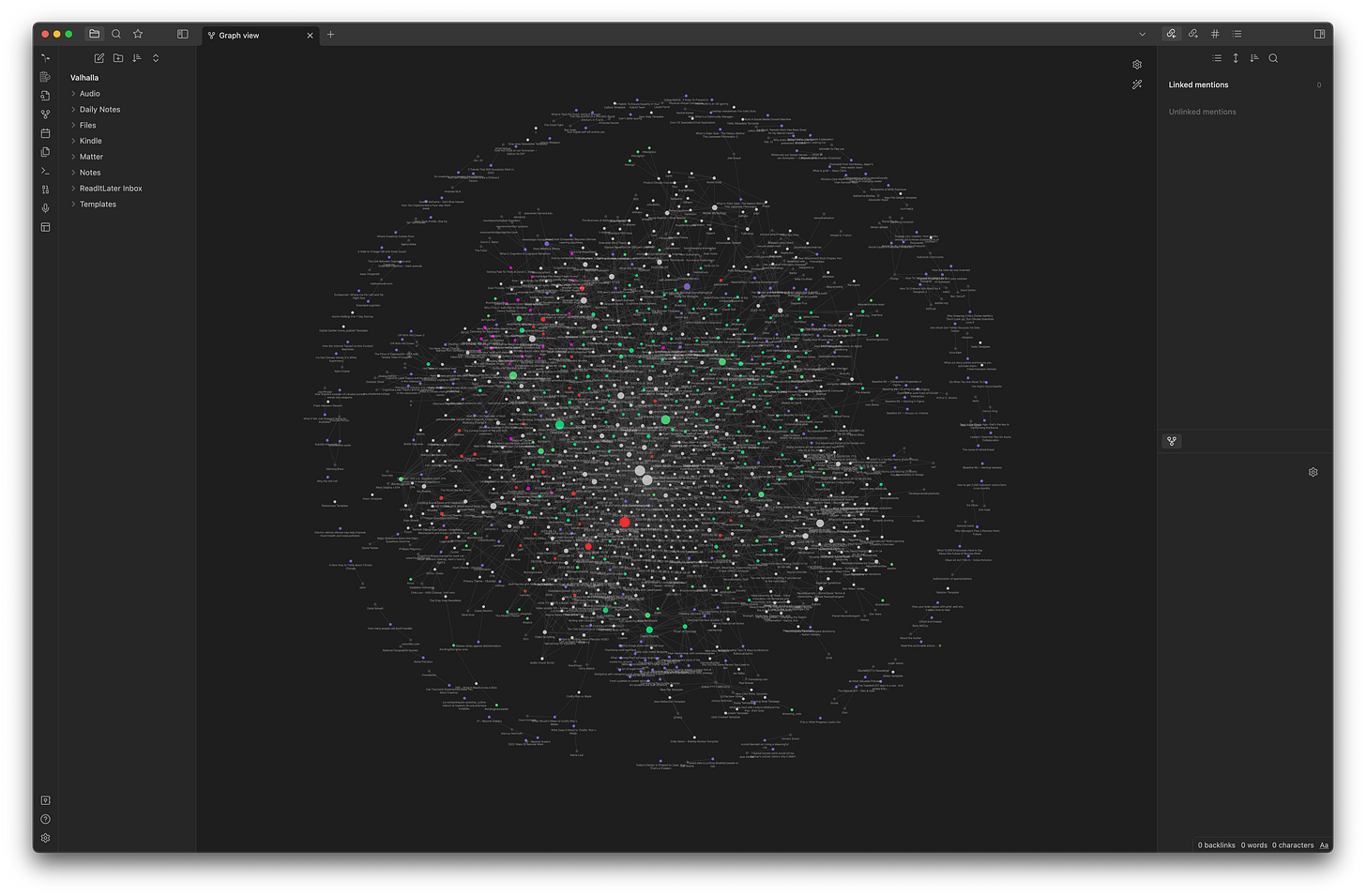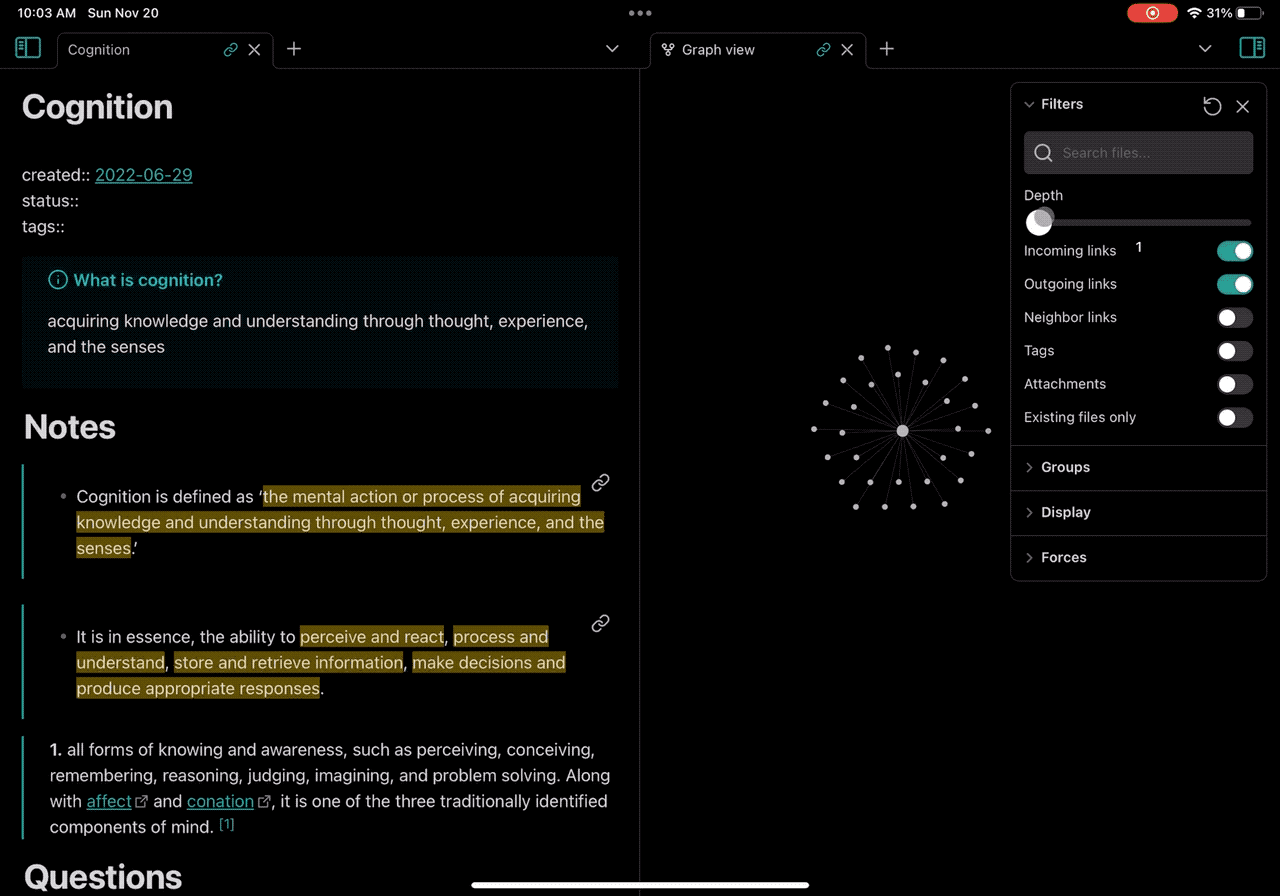Networked Thought
Finding insights and connections with your notes
Inspirational, successful people often talk about "turning thought into action", but most of us don't know how to actually do that. It feels like such a serendipitous thing. They come up with a thought and have a plan to capitalize on. The product gets built or the article gets written, seemingly by itself. How is it possible to turn ideas and thoughts into action? Do they have a trick or are they geniuses?
I used to think the same way until I started to find connections between my thoughts. The practice of forming connections between your thoughts is called "networked thought". The best way to practice this is by capturing thoughts and learnings, then finding their intersecting points. But how do you find these points when they are not blatantly obvious?
Before you can find these connections and turn them into something actionable, you need to capture and write. Over the past month or so, I have been talking about note-taking and systems that support note-taking, such as Zettelkasten and Digital Gardening. I’d recommend giving those a read for the practical steps of capturing, atomizing, and tending your notes.
Note-taking is a wonderful practice of thinking, reflection, and writing, but action is generally the missing piece for most people. Why build this system if it doesn’t convert into something that you can capitalize on, metaphorically or literally? Well, you can.
The first step is making sure that you are keeping your system as atomic as you can. As mentioned in a previous edition, you need to keep your notes focused. When a new topic comes up, link to it for context. Don’t add the topic, in its entirety, to an existing note, link out to the new topic and go into detail in the new note.
Next, you must add your own writing in these notes. Don’t just capture information. Include your opinion and deeper thoughts on the subject. If you cannot elaborate on a subject, you either don’t have enough information or do not really find it interesting. This is key, as you can decide if you want to keep pursuing it or drop it. If you do want to push forward, go as deep as you can on the subject. Start with bullet points, but then elaborate into sentences, and maybe full paragraphs. The more story and structure around a topic you can form, the deeper the understanding. This leverages the concept of tending your notes. In bullet form a note can be a seedling, budding into a few sentences, and when evergreen, it should be multiple paragraphs.
How do these then evolve into actionable notes?
This happens when a note evolves from a note into an essay. There is a clear delineation here. Your note will form a narrative. There will be adjacent and opposing notes linked. Your opinion will become reinforced.
An essay does not need to be in a special form. Your high school education does not need to be leveraged. It can look however you like.
When you pair this process up with modern tools that use a graph system like Obsidian or at least back-linking like Notion, you also start to find serendipitous connections. You can see how a thought connects to another thought, in a contextual manner. If using a graph system, you can even go levels deeper.
To take this concept to the next level, you should review your notes. This means both in a structured and random way. You can sort your notes by date or by an overarching topic and then manually review them or you can use spaced repetition. Spaced repetition or more broadly the spacing effect is generally used for long-term memory recall, but can also be valuable to review notes that you might not have seen for a while and were possibly not intending to. Having a random note pop-up for your review and seeing a connection you didn't expect is exactly the effect you are going for. When your mind is caught off guard by a concept, regardless of the stage in its tending, you will see new connections you didn't previously. This compiles and allows you to then distill and act upon them.
When you have a library of thoughts that have been refined, you always have something ready to capitalize on.
These distilled thoughts can then be easily spun into blog posts, social media content, or even products. When you have a library of thoughts that have been refined, you always have something ready to capitalize on. You simply need to review, reshape, and repurpose them. This process is easier than ever now. Our digital PKMs can be on us at all times. We can add to them at a moment's notice - as soon as a new thought enters our mind.
In order to turn your thoughts into action, you simply need to be intentional in tending to them. This can be done with routines and practices, or simply by using the tools available to augment the process. However you choose, forming a network between your thoughts is the best way to bring them to life.
If you are interested in setting up a system that supports this in Notion, consider getting my digital garden template.
Subscribe to Async Chats! | Follow on Twitter | Newsletter Feedback Form


